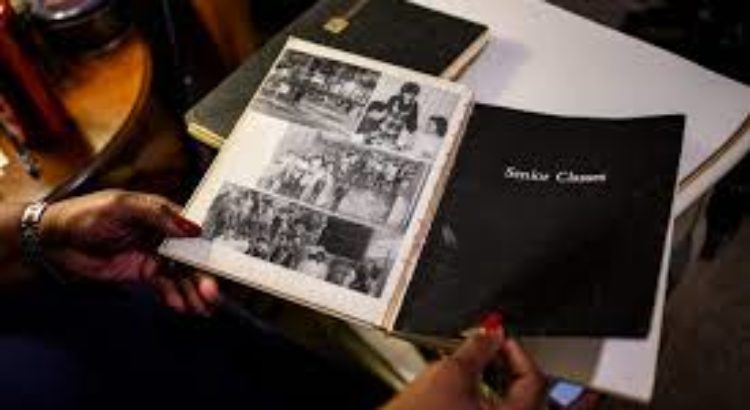When schools integrated 50 years ago, these black students had to pick up and move
GREENVILLE, S.C. – He was just a boy, but he could see something the grown-ups couldn’t.
Maybe because children’s eyes are wide enough to see the whole sky. Or they are close enough to the ground to spot the beginnings, the tiny roots of things. Maybe because youth is not an age but a lens.
When Ernest Hamilton watched the trees topple in the forest, they toppled for him. When the earth behind his Nicholtown house moved, it moved for him. When he watched cement and metal and glass rise from the clearing, he knew the building was built for him.
When the doors opened and the walls became 40 classrooms, a 600-seat auditorium, a gym for 1,500, the school still appeared to be for him and him alone.
Joseph E. Beck High School belonged to Ernest, and Ernest belonged to Beck. They shared a foundation.
Just as he watched the school’s making from his backyard, the school watched him being made. A boy built up into a leader in the classroom and on the football field.
When Ernest graduated in 1969, he didn’t leave Beck. He scratched his initials in hallway corners. He scrawled his full name on the wall outside the basketball courts.
He was to be there, always.
But Beck’s time lasted only a few months more.
On Feb. 17, 1970, Beck became a middle school. It was open as a high school for just five years.
The change was part of a court-mandated integration plan finalized and executed in a matter of weeks. Tens of thousands of books and furniture and supplies shifted over one long weekend in February – the middle of the school year.
A judge’s order meant that Greenville, a city in the state that was second-to-last in the USA to desegregate, could operate only integrated schools. Greenville was the last major district in South Carolina to do so, and with 58,000 students, it was one of the largest in the nation.
The district built Beck a decade after U.S. Supreme Court justices ruled unanimously that segregated systems were unconstitutional. It opened eight years after federal troops escorted nine black students into a school in Little Rock, Arkansas, and two years after a judge had approved black student transfers to all-white schools in Charleston.
When the county finally moved, it was black Greenville that did the majority of the moving.
It was the black community that performed the heavy lifting of public school integration after decades of bearing the burden of legally enforced segregation.
About 12,000 students received transfer-assignment letters days before the change. The district moved students and faculty to achieve an 80% white, 20% black makeup, a formula calculated to reflect Greenville’s population at the time.
About 60% of the black student population was reassigned. Only 10% of the white students were.
That meant black seniors ordered rings for graduating classes that never walked across the stage. Majorettes no longer had a band to lead. It meant championship basketball teams disbanded mid-season.
Integration cut homes and neighborhood streets in half. A son would go to one school, a daughter to another. Students on the left of the street would have to board a bus to a school on one side of town; students on the right side would board a bus that took them the other direction.
Fuente de la Información: https://www.usatoday.com/story/news/education/2020/02/16/black-history-month-people-facts-segregation-civil-rights-movement-leaders/4767229002/







 Users Today : 54
Users Today : 54 Total Users : 35403247
Total Users : 35403247 Views Today : 76
Views Today : 76 Total views : 3332515
Total views : 3332515